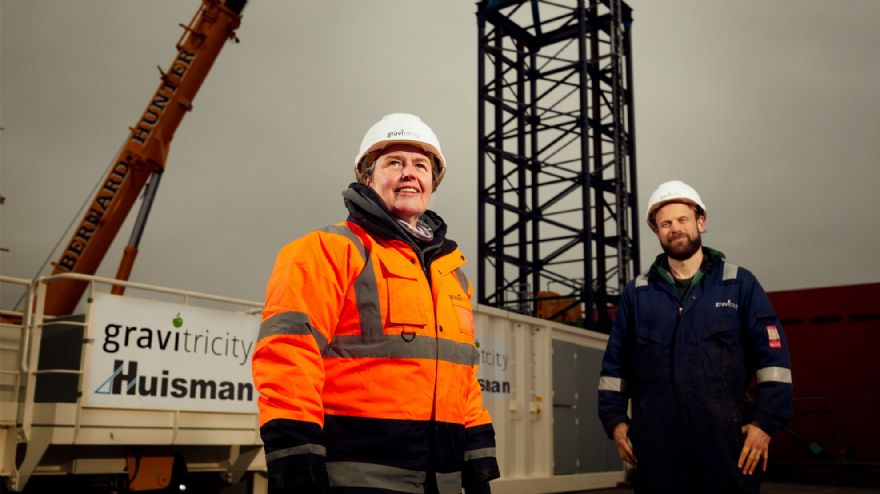
Edinburgh-based
Gravitricity, an energy storage specialist, has revealed plans to add hydrogen and heat storage to its underground gravity energy system.
The company has submitted a global patent to turn purpose-built shafts into pressurised energy stores, capable of safely accumulating significant quantities of the gas.
Company founder Martin Wright said: “The future hydrogen economy will need to find economic and safe ways to store hydrogen where it is needed. At present our domestic gas network has vast amounts of storage built in under the North Sea.
“The gas grid of the future will be powered by intermittent renewables – and that means we need to find ways to store green hydrogen when energy is plentiful, close to where it is required.
“Our idea is to make each Gravitricity shaft serve as a very large, sealed pressure vessel, and to use the shaft itself to hold significant quantities of gas. We believe this will be far more economic and safer than above-ground storage pressure vessels — and will massively increase the storage capacity of the system.
“We envisage building single or multiple shafts which, when co-located with a green hydrogen electrolysis plant, would have a very clear dual function: to store excess electricity for use by the electrolysers when needed, and to store the plant’s output as a buffer into the gas grid.”
He continued: “This will not only smooth the input and output of the green hydrogen plant, but it will improve the economics, bringing down the cost of green H
2.
“The hydrogen store could also be used as a fuelling point, providing low (or zero) carbon hydrogen fuel for heavy goods vehicles, ships or trains, or be used to generate significant additional quantities of electricity if required.”
The serial innovator – who co-established the world’s first successful tidal current turbine with his former company Marine Current Turbines (which was subsequently bought by Siemens) – believes a pilot Gravitricity hydrogen storage system can be in place within a few years.
To date, Gravitricity is currently operating its 250kW demonstrator in Edinburgh and is scaling up to commence work on its first 4-8MW scheme later this year.
Company managing director Charlie Blair said: “The majority of early schemes will be built in existing mine shafts, but we are already in discussion with a major UK concern with plans to build a purpose-built shaft – solely for our gravity system.
“In the decade ahead, we believe that the capacity to sink single or multiple shafts exactly where required could result in the rapid scale-up of our technology. Not just in the UK, but around the world.
He concluded: “Building below-ground hydrogen storage into our system will become another extremely valuable revenue stream for Gravitricity projects. Longer term, we can also build inter-seasonal heat storage into our system to provide a further service making best use of our infrastructure.”